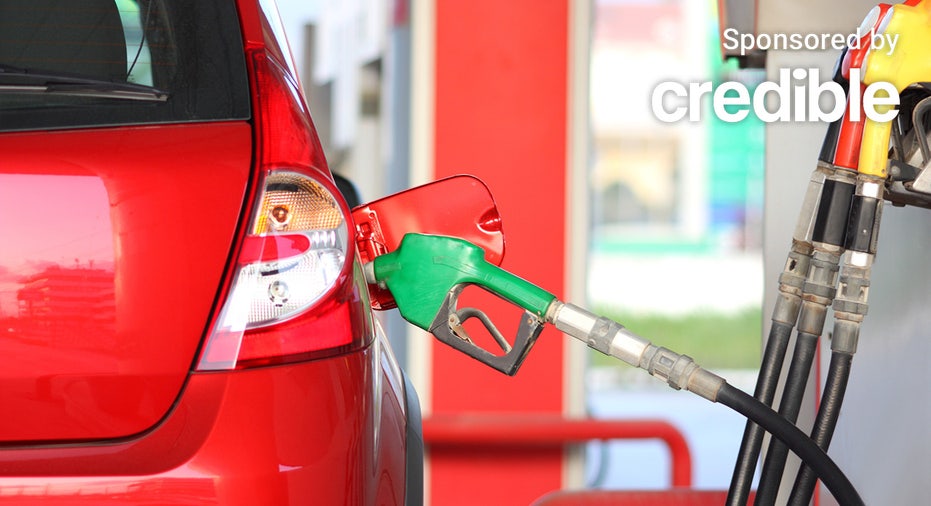Gas prices rose by just two cents this week even as oil prices dropped. (iStock)
Gas prices went up and down this week, but averaged two cents higher overall, AAA said in their weekly gas prices report.
The national average price for the week was $3.67 per gallon, 14 cents higher than this time last month and eight cents more than last year. This increase occurred even though demand didn’t grow by much and oil prices fell.
“From a demand perspective, we have entered the pre-Memorial Day funk,” Andrew Gross, AAA spokesperson said.
“And the cost of a barrel of oil is nearly $10 less than two weeks ago, as oil prices have fallen into the upper $70s. This may keep pump prices somewhat flat for the immediate future,” Gross said.
Gas demand rose during the week from 8.42 million barrels per day to 8.62 million barrels per day, data from the Energy Information Administration found.
Lower your car insurance rates today when you visit Credible. Credit helps you can compare rates and lenders with the click of a button.
A TOP GOAL OF AMERICANS IS TO BUY A NEW CAR, BUILD EMERGENCY SAVINGS: STUDY
States in the South pay the least for gas
Southern drivers saved the most on gas. They paid over a dollar less per gallon, on average. There are also a few other stats throughout the country where gas prices tend to be lower. Here are the 10 least expensive markets:
- Mississippi ($3.12)
- Arkansas ($3.18)
- Oklahoma ($3.20)
- Kansas ($3.21)
- Louisiana ($3.22)
- Colorado ($3.23)
- Minnesota ($3.27)
- Missouri ($3.29)
- Alabama ($3.29)
- Texas ($3.29)
The West generally had some of the highest gas prices, largely due to more constant demand. These are the 10 most expensive gas markets:
- California ($5.37)
- Hawaii ($4.81)
- Washington ($4.69)
- Nevada ($4.56)
- Oregon ($4.49)
- Alaska ($4.39)
- Arizona ($4.03)
- Illinois ($3.94)
- Idaho ($3.91)
- Utah ($3.90)
Ensure you have the right insurance policy for your budget and your car. Compare several auto insurance companies, as well as their coverage, with the help of Credible.
CONSUMERS SEE HIGHER AUTO PAYMENTS IN EXCHANGE FOR BETTER BORROWING RATES
Auto sales are up for many automakers, particularly for electric vehicles
Many automakers saw their sales increase in April, as car prices trended down. Electric vehicles in particular are having a moment, adding substantially to sales numbers.
Toyota led the charge, with another double-digit increase in their sales numbers in April, making it the sixth straight month sales have increased. The rising number of hybrid deliveries has contributed to Toyota’s success.
Toyota’s electric sales also jumped impressively by 56%. The company sold 77,228 electric vehicles last month.
Honda also came in strong in April. The company’s sales hit 106,000 units, up 15.7% year-over-year. It was also the third straight month Honda sales were above 100,000 units.
Other automakers didn’t have as good of a month. Kia sold 65,754 units last month, a 3.6% drop. April was the fifth month in a row the company’s sales declined.
Ford and Hyundai had slightly lower sales compared to their competitors, but their electric vehicle and hybrid vehicle sales rose. Hyundai reported that their EV sales rose by 26% while hybrids rose by 29%. Ford’s three EVs rose a combined 129% to 8,019 sales.
When you buy a car, make sure you have the right insurance coverage at a reasonable price. Car insurance rates vary based on a variety of factors — from your credit score to driving habits. Use Credible’s to shop around and potentially lower your car insurance premium today.
CAR INSURANCE COSTS TO KEEP RISING IN 2024 – PAY LESS IN THESE US STATES
Have a finance-related question, but don’t know who to ask? Email The Credible Money Expert at [email protected] and your question might be answered by Credible in our Money Expert column.

 Blog Post6 days ago
Blog Post6 days ago
 Accounting1 week ago
Accounting1 week ago
 Economics1 week ago
Economics1 week ago
 Personal Finance1 week ago
Personal Finance1 week ago
 Economics1 week ago
Economics1 week ago
 Personal Finance1 week ago
Personal Finance1 week ago
 Accounting1 week ago
Accounting1 week ago
 Finance1 week ago
Finance1 week ago










